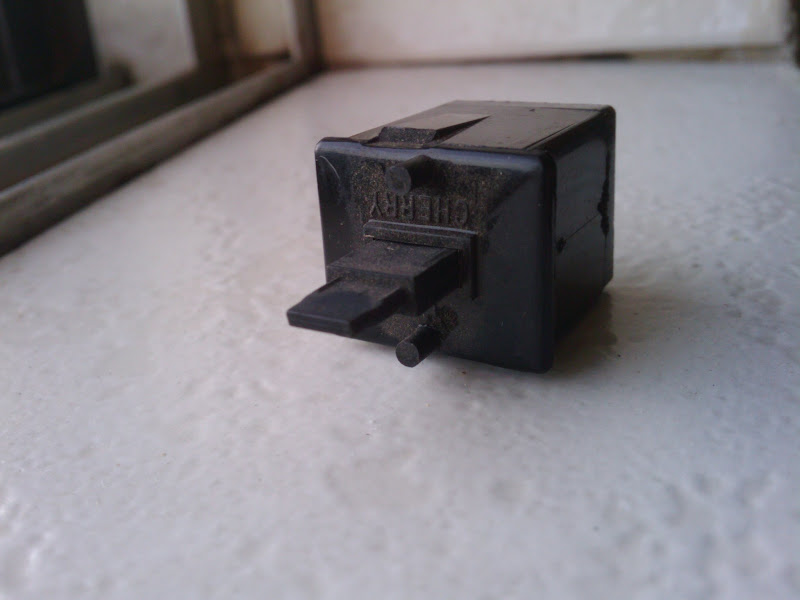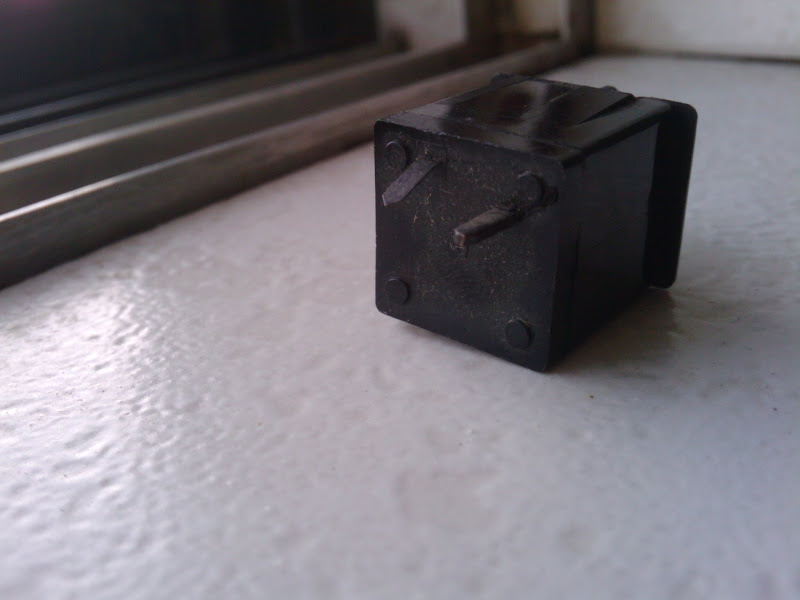Spoiler:
http://www.greendich.com.tw/products/cherry/M81.pdf
http://www.greendich.com.tw/products/cherry/M84.pdf
M81 and M84 datasheets, thanks to Ripster's archived wiki
http://sandy55.fc2web.com/keyboard/old_cherry_mx.html - Cherry M7 with tilted stem
http://deskthority.net/marketplace-f11/ ... -t720.html - Cherry M8 with red leds, 6mm keycaps
http://deskthority.net/w/images/6/6c/Catalogue_1982.pdf - 1982 Catalog, uploaded by Dirge, by far the most useful document yet
https://docs.google.com/open?id=0B4Wyz4 ... S1DX3h1d3M - 1973 Catalog, uploaded by HaaTa, includes M6 part numbers/diagrams on pg 19-20
http://deskthority.net/photos-videos-f8 ... t2187.html Sixty's post on cherry M8, includes various keycap profiles
http://www7.ocn.ne.jp/~hisao/image/hc20.htm
http://deskthority.net/marketplace-f11/ ... -t720.html
Some other M8 sightings, there is also a few relevant boards on HaaTa's website, but I'm not really sure how to link to them...
Daniel Beadsmore's Cherry M8 switch manuals, located on the second post on this thread.
http://www.greendich.com.tw/products/cherry/M84.pdf
M81 and M84 datasheets, thanks to Ripster's archived wiki
http://sandy55.fc2web.com/keyboard/old_cherry_mx.html - Cherry M7 with tilted stem
http://deskthority.net/marketplace-f11/ ... -t720.html - Cherry M8 with red leds, 6mm keycaps
http://deskthority.net/w/images/6/6c/Catalogue_1982.pdf - 1982 Catalog, uploaded by Dirge, by far the most useful document yet
https://docs.google.com/open?id=0B4Wyz4 ... S1DX3h1d3M - 1973 Catalog, uploaded by HaaTa, includes M6 part numbers/diagrams on pg 19-20
http://deskthority.net/photos-videos-f8 ... t2187.html Sixty's post on cherry M8, includes various keycap profiles
http://www7.ocn.ne.jp/~hisao/image/hc20.htm
http://deskthority.net/marketplace-f11/ ... -t720.html
Some other M8 sightings, there is also a few relevant boards on HaaTa's website, but I'm not really sure how to link to them...
Daniel Beadsmore's Cherry M8 switch manuals, located on the second post on this thread.
Spoiler:
1.) Some cherry M8 diagrams include a T-shaped switch, while others show the M8 using a cross shaped stem. In the 1982 catalog, it lists switches with T mounts ( T ), bar mounts ( | ), and cross mounts ( + ). The problem with this is that the catalog does not distinguish between T mounts and cross mounts, labeling T/Cross mounts for use with 6mm caps, and bar mounts for 12 mm caps.
If I lost you anywhere in there, all I'm really saying is that we don't know which models use T stems and which use cross stems, or even if these T-stems exist.
Stem type is defined by M81-0x00 , where x is 1,3,5,6 or 7, depending on stem type. More details in M8 guide.
2.) Another variation in the shape of the keys is the shape of the plastic inside of them. Switches with LEDs are missing a small piece of plastic that (supposedly) stabilized the switch more.
For example, compare this... (From HaaTa's website)
To this... (Grond)
or this... (Ascii)
Oddly, Ascii's numerikeys numpad has LED holes, but does not have an LED. I don't know which models have the hole for the LED and which ones don't.
Update: There appears to be no value that can allow for ordering of empty LED-holes in M8 switches. My thought is that Cherry must have revised their design at some point to have better performance switches where LEDs were not required. The only way that this can be confirmed is by looking at a large quantity of keyboards with this switch aswell as the years they were made and see if there is a common date where they switch over.
3.)I mentioned earlier that there were two types of cherry keycaps at that time, 6mm and 12mm. From what I can tell, 12mm keycaps generally were used on bar-mount switches, and I think that these keycaps had a cross mount on the inside, even though the bar mount only used 2 out of the 4 pegs. 6mm keycaps also used cross mounts, and used cross-mount switches, and possibly T mount switches. However, different switches were used for 6mm keycaps, as the depth of the mount on the inside of the 6mm keycap was less than it is on the 12mm keycap. It appears to be that these MX switches with the converter stems as seen here were the version of Cherry MX for the 6mm keycaps, where modern MX switches have stems that would be compatible with the vintage 12mm keycaps. I am curious if GMK produced these 6mm / 12mm keycaps, or if it was cherry themselves.
Update: I'm still a little confused about the different profiles, I don't quite understand them yet, but that's just because I haven't really looked into them much.
4.) The difference between M81, M84, and what ever other variants existed was the contact material used in the switch. For example, M81s used "AuAg 26N:3" contacts. I'm not sure on what exactly this means, but I would guess that it is the ratio of gold to silver in the alloy. We also have no leads onto what other versions of M8 existed.
Variants included M81, M83, M84, and M85
5.) We have much more information on Cherry M7. The 1982 guide really has given us everything we need to know. I don't have too much evidence to support this, but earlier switches such as M6 (whose product numbers are listed in the 1973 catalog) visually appear to be very similar to M7 judging from their drawings. I would guess that M6 is just an earlier version of M7, and this can be confirmed by finding a Cherry M7 switch on a board produced before 1973. In which case that switch isn't a M7, but is really a M6, since Cherry didn't have M7 listed in their catalog in 1973.
Update: Looking at the surplus of useful information we now have from the cherry M8 guide, I now realize there must also be an equally useful amount of information we can gain by finding a M7 guide.
If I lost you anywhere in there, all I'm really saying is that we don't know which models use T stems and which use cross stems, or even if these T-stems exist.
Stem type is defined by M81-0x00 , where x is 1,3,5,6 or 7, depending on stem type. More details in M8 guide.
2.) Another variation in the shape of the keys is the shape of the plastic inside of them. Switches with LEDs are missing a small piece of plastic that (supposedly) stabilized the switch more.
For example, compare this... (From HaaTa's website)
To this... (Grond)
or this... (Ascii)
Oddly, Ascii's numerikeys numpad has LED holes, but does not have an LED. I don't know which models have the hole for the LED and which ones don't.
Update: There appears to be no value that can allow for ordering of empty LED-holes in M8 switches. My thought is that Cherry must have revised their design at some point to have better performance switches where LEDs were not required. The only way that this can be confirmed is by looking at a large quantity of keyboards with this switch aswell as the years they were made and see if there is a common date where they switch over.
3.)I mentioned earlier that there were two types of cherry keycaps at that time, 6mm and 12mm. From what I can tell, 12mm keycaps generally were used on bar-mount switches, and I think that these keycaps had a cross mount on the inside, even though the bar mount only used 2 out of the 4 pegs. 6mm keycaps also used cross mounts, and used cross-mount switches, and possibly T mount switches. However, different switches were used for 6mm keycaps, as the depth of the mount on the inside of the 6mm keycap was less than it is on the 12mm keycap. It appears to be that these MX switches with the converter stems as seen here were the version of Cherry MX for the 6mm keycaps, where modern MX switches have stems that would be compatible with the vintage 12mm keycaps. I am curious if GMK produced these 6mm / 12mm keycaps, or if it was cherry themselves.
Update: I'm still a little confused about the different profiles, I don't quite understand them yet, but that's just because I haven't really looked into them much.
4.) The difference between M81, M84, and what ever other variants existed was the contact material used in the switch. For example, M81s used "AuAg 26N:3" contacts. I'm not sure on what exactly this means, but I would guess that it is the ratio of gold to silver in the alloy. We also have no leads onto what other versions of M8 existed.
Variants included M81, M83, M84, and M85
5.) We have much more information on Cherry M7. The 1982 guide really has given us everything we need to know. I don't have too much evidence to support this, but earlier switches such as M6 (whose product numbers are listed in the 1973 catalog) visually appear to be very similar to M7 judging from their drawings. I would guess that M6 is just an earlier version of M7, and this can be confirmed by finding a Cherry M7 switch on a board produced before 1973. In which case that switch isn't a M7, but is really a M6, since Cherry didn't have M7 listed in their catalog in 1973.
Update: Looking at the surplus of useful information we now have from the cherry M8 guide, I now realize there must also be an equally useful amount of information we can gain by finding a M7 guide.







